Caprilli Close Contact Classic Saddle Review: Is This Versatile Saddle Right For You?
Your Versatile Riding Partner, Unveiled
Searching for a saddle that delivers comfort, classic style, and performance without emptying your wallet? The Caprilli Close Contact Classic Saddle might just be your perfect match. Designed for riders who demand versatility, this saddle has earned a reputation as a reliable choice for jumping, eventing, and everyday riding.
But does it live up to the hype?
In this hands-on review, we’ll break down its construction, fit, and real-world performance—backed by insights from riders who’ve put it to the test. Whether you’re a competitive eventer, a weekend jumper, or simply seeking a dependable all-purpose saddle, we’ll help you decide if the Caprilli Classic deserves a spot in your tack room.
Ready to find out if this saddle is the right fit for you and your horse? Let’s dive in.
Decoding the Design: Features & Specifications
Key Specs at a Glance
- Available Sizes: 16″ – 18″ (varies by retailer)
- Tree Widths: Narrow, Medium, Medium-Wide, Wide (crucial for proper horse fit)
- Leather Type: Premium full-grain leather for durability and a broken-in feel
- Flap Length: Standard close-contact design, optimized for jumping and forward seat
- Panel Type: Wool-flocked for adjustable, even weight distribution
- Weight: Approximately 12-15 lbs—light enough for easy handling, sturdy for support
- 360° Interactive Viewer: [Insert Link] (Explore every angle before buying)
Construction & Craftsmanship: Built to Last?
Leather & Stitching
- Supple yet durable full-grain leather molds to the rider over time.
- Reinforced stitching in high-stress areas (billets, stirrup bars) for long-term resilience.
- Pro Tip: Regular conditioning extends lifespan—expect 5+ years with proper care.
Tree & Stability
- Traditional spring tree offers a balance of support and flexibility, moving with your horse.
- Secure gullet design prevents excessive pressure on the horse’s spine.
Panels & Comfort
- Wool-flocked panels allow for professional adjustment—ideal for changing horse shape.
- Even weight distribution reduces pressure points, promoting horse comfort during long rides.
Hardware You Can Trust
- Stainless steel stirrup bars resist corrosion and provide secure leg positioning.
- Double-stitched billets for added safety—no sudden surprises mid-ride.
Rider Harmony: Fit, Comfort & Performance
Does It Fit You?
Seat & Security
- Moderate depth—deep enough for security, shallow enough for mobility.
- Slightly forward-balanced to aid jumping position without sacrificing dressage adaptability.
Twist & Knee Rolls
- Narrow-to-medium twist suits riders with narrower hips (a common preference for female riders).
- Generous knee rolls enhance stability over fences without locking the leg in place.
Who’s It Best For?
✔ The Jumping Enthusiast – Secure, close-contact feel for confident fences.
✔ The Eventing All-Rounder – Adaptable enough for dressage and cross-country.
✔ The Everyday Rider – Comfortable for schooling, lessons, and trail rides.
Not Ideal For: Riders needing an ultra-deep seat or wide twist for hip comfort.
In-Saddle Performance: How Does It Ride?
Close Contact Feel – Excellent sensitivity to your horse’s movement.
Freedom of Movement – Allows subtle leg aids without restriction.
Jump-Ready – Promotes a balanced, secure position over fences.
Consider Your Discipline – While versatile, it’s optimized for jumping and eventing. Pure dressage riders may prefer a deeper seat.
Horse-Centric Design: A Saddle Built for Equine Comfort
Tree Shape & Gullet Width: Does It Fit Your Horse’s Back?
- Tree Conformation: Best suited for medium to high-withered horses with a moderately curved back.
- Gullet Clearance: Generous wither clearance (approx. 2-3 fingers) prevents spinal pressure.
- Wither Relief: Rounded tree points minimize pinching—critical for sensitive horses.
- Watch For: Horses with flat backs or extremely broad shoulders may need a wider tree.
Panel Design & Weight Distribution
- Even Contact: Wool-flocked panels mold to the horse’s back, reducing bridging.
- Pressure Dispersion: Wide-bearing surface distributes weight evenly, avoiding concentrated pressure points.
- Pro Tip: Have a saddle fitter adjust flocking every 6-12 months as your horse’s musculature changes.
Pressure Points: What to Monitor
Common Trouble Spots:
- Behind the shoulder blades (if tree is too narrow)
- Along the loins (if panel contact is uneven)
Signs of Poor Fit: - White hairs or dry patches under the saddle
- Resistance when girthing up
- Shortened stride or stiffness
Impact on Movement & Comfort
Spinal Freedom: Tree flexes with the horse’s back for unrestricted movement.
Shoulder Mobility: Forward-cut panels allow full extension at the trot and canter.
Long-Term Comfort: Proper fit reduces risk of soreness or long-term back issues.
Breed & Conformation Suitability
✔ Ideal For:
- Thoroughbreds, Warmbloods, and sport horses with defined withers.
- Horses in moderate to hard work (muscle helps maintain fit).
✖ Less Ideal For: - Draft crosses or ponies with flat, broad backs.
- Young/green horses still developing topline muscle.
Ensuring Proper Fit: A Non-Negotiable for Horse & Rider
Why Professional Fitting Matters
- No “One-Size-Fits-All” – Even the best saddle can cause harm if poorly fitted.
- Dynamic Fit Matters – A saddle fitter assesses your horse under saddle in motion.
- Expert Tip: Schedule fittings seasonally—horses gain/lose weight with workload changes.
Signs of Good vs. Poor Fit
| Good Fit | Red Flags |
|---|---|
| Even sweat patterns after riding | Dry spots or uneven sweat marks |
| Horse stands quietly when girthing | Tension, tail-swishing, or biting |
| Rider sits centered without tilting | Feeling “perched” or struggling for balance |
Built to Last: Durability & Care
Leather & Construction Quality
- Full-Grain Leather: Develops a rich patina over time but requires weekly conditioning in heavy use.
- Double-Stitched Stress Points: Reinforced at billets, stirrup bars, and knee rolls.
- Hardware: Stainless steel D-rings and nickel-plated buckles resist rust.
Extending Your Saddle’s Lifespan
- After Every Ride: Wipe down with a damp cloth to remove sweat.
- Weekly: Condition with a pH-balanced leather cream (avoid silicone-based products).
- Storage: Keep on a padded rack in a climate-controlled space—never in direct sunlight.
Expected Lifespan: 8-10 years with diligent care; flocking may need refreshing sooner.
Weighing the Pros & Cons
Why Riders Love the Caprilli Classic
✔ Discipline-Versatile – Jumps, trails, and flatwork-ready.
✔ Budget-Friendly Quality – Comparable to saddles $500+ more expensive.
✔ Classic Leather Appeal – Breaks in beautifully over time.
Potential Dealbreakers
✖ Not for Wide, Flat-Backed Horses – Limited adjustability beyond flocking.
✖ Leather Demands Maintenance – Neglect leads to cracking/stiffness.
✖ Online Fit Gambles – Always check return policies before buying untried.
Who Is the Caprilli Close Contact Classic Saddle Ideal For?
The Perfect Match: Rider Personas
1. The Jumping & Eventing Enthusiast
- Why It Works: Forward-cut flaps and balanced seat support a secure jumping position.
- Best For: Schooling over fences, cross-country, and low-level eventing.
- Limitation: Advanced competitors may prefer a higher-end model with more customization.
2. The Versatile Training Rider
- Why It Works: Adaptable for flatwork, cavalletti, and light jumping—one saddle for all your lessons.
- Pro Tip: Pair with a half pad for minor fit adjustments as your horse’s shape changes.
3. The Traditionalist on a Budget
- Why It Works: Classic leather look and feel without a $3,000 price tag.
- Watch For: Requires diligent maintenance to preserve leather quality.
4. The Intermediate+ Rider
- Why It Works: Riders with developed balance appreciate its close-contact feedback.
- Not Ideal For: Beginners may struggle with the moderate seat depth.
Alternatives to Consider
Competitor Comparison
| Saddle Model | Price Range | Key Differentiator | Best For |
|---|---|---|---|
| Caprilli Classic | 1,200–1,200–1,600 | Best value for leather quality | Jumpers, all-around riders |
| Pessoa Genesis | 1,800–1,800–2,200 | Adjustable gullet system | Horses changing shape |
| Bates Caprilli | $2,500+ | Changeable panels for precision | High-level competitors |
When to Look Elsewhere:
- Dressage Purists: Opt for a deep-seated dressage saddle (e.g., Schleese or County).
- Trail Riders: Consider an endurance saddle with shock-absorbing panels.
Maintenance Guide: Protect Your Investment
Daily & Weekly Care
- After Riding:
- Wipe down with a damp microfiber cloth to remove sweat.
- Lift flaps to clean billet straps (dirt hides here!).
- Weekly Conditioning:
- Use Lexol or Effax leather conditioner—avoid petroleum-based products.
- Focus on high-wear areas: billets, knee rolls, and seat.
Storage Tips
- Never store near heaters or in humid barns.
- Use a wool-lined cover to prevent drying.
Troubleshooting
- Stiff Leather? Apply conditioner, wrap in plastic overnight, then buff.
- White Mold Spots? Dab with 1:1 vinegar/water mix, then condition.
- Deep Scratches? Fiebing’s Leather Repair Kit can mask minor damage.
Final Verdict: Is This Your Saddle?
Buy It If You…
✔ Need a do-it-all saddle for jumping and training.
✔ Prefer traditional leather over synthetic.
✔ Want quality without luxury pricing.
Skip It If You…
✖ Ride a wide, flat-backed horse (fit challenges).
✖ Want cutting-edge tech like adjustable trees.
✖ Dislike regular leather maintenance.
Last Steps Before Buying:
- Find a Fit: Use the Caprilli Dealer Locator
- Read Reviews: Check forums like Chronicle of the Horse.
- Verify Returns: Ensure the retailer offers a 30-day trial period.

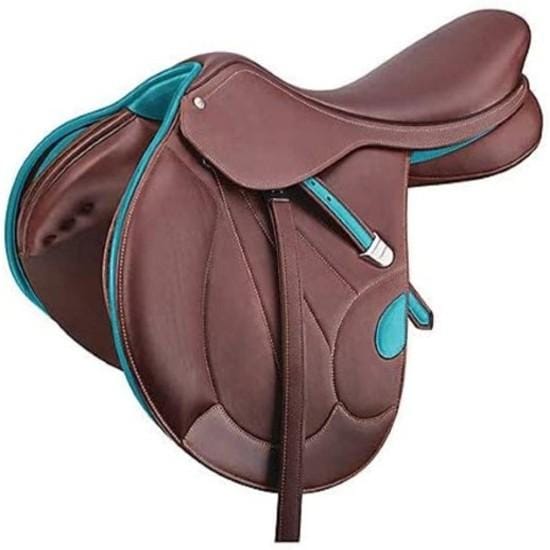


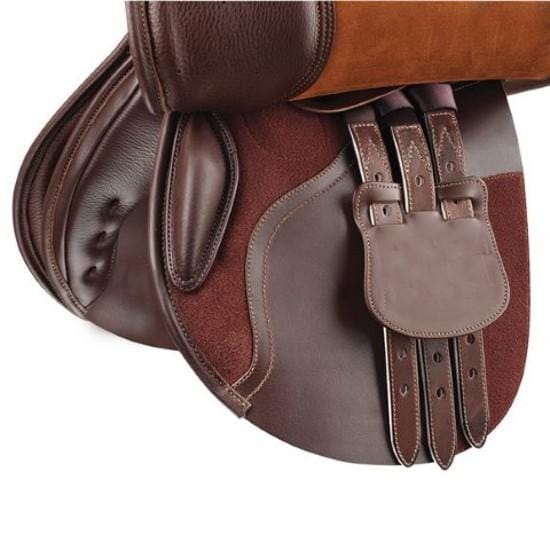
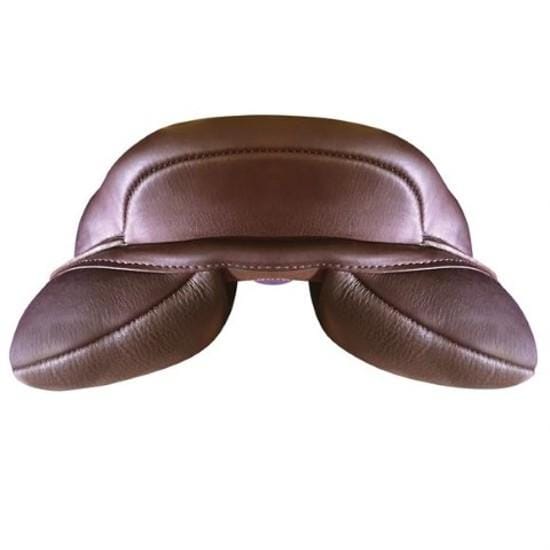
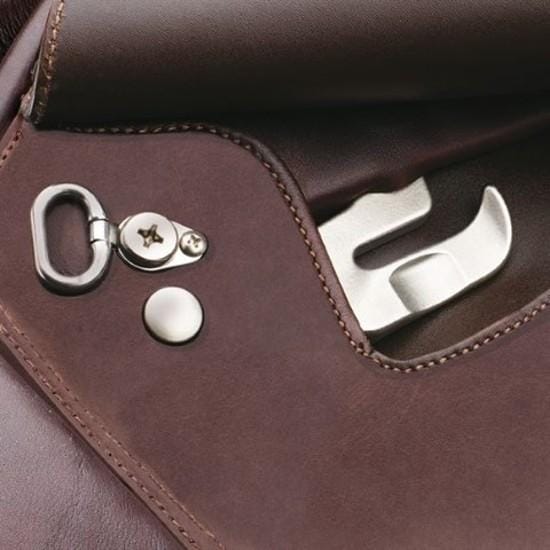

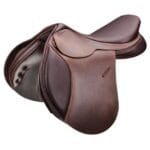
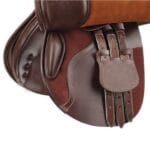
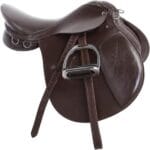
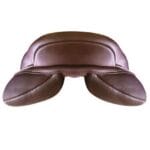
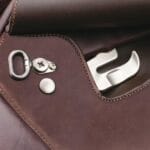
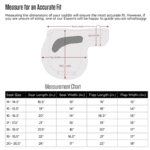
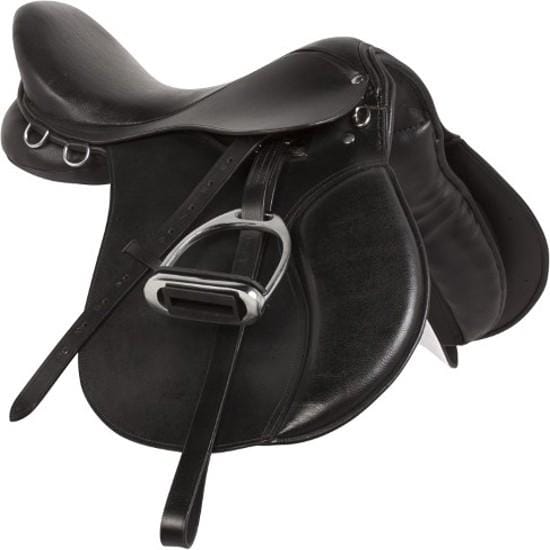
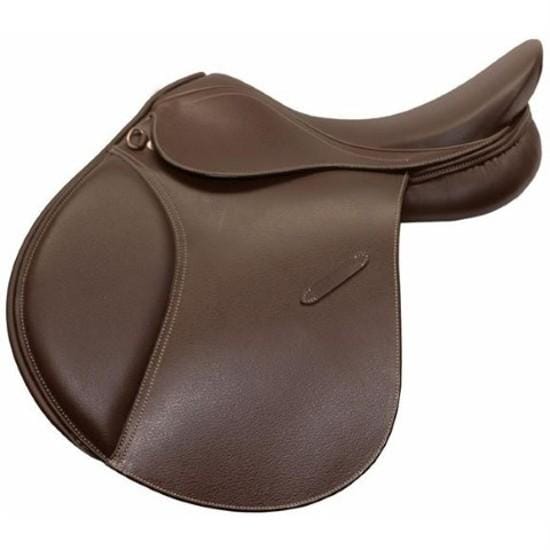
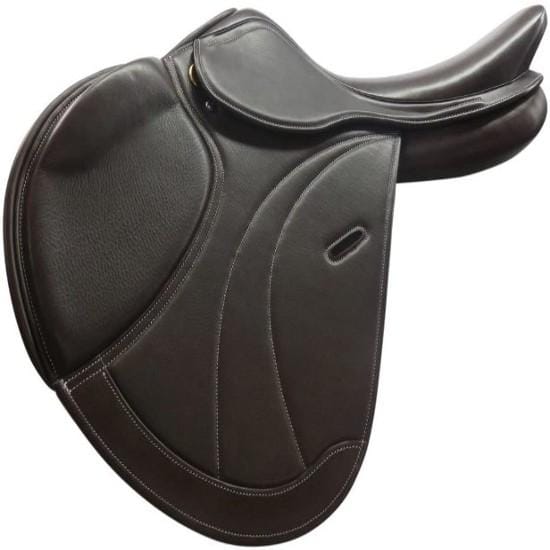
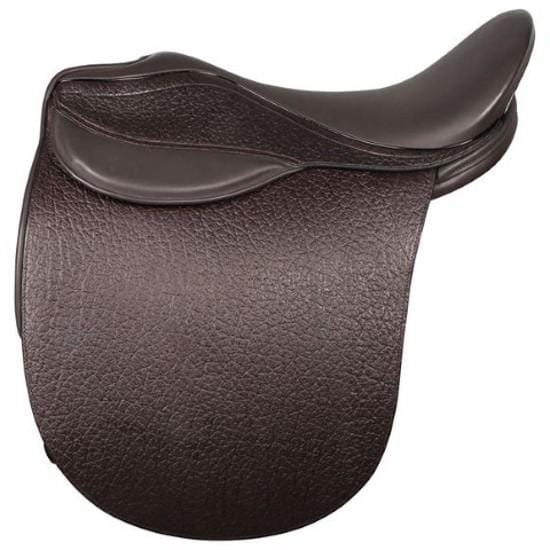
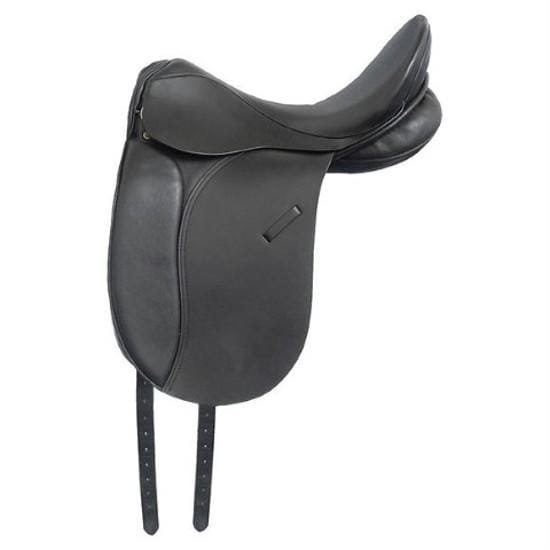
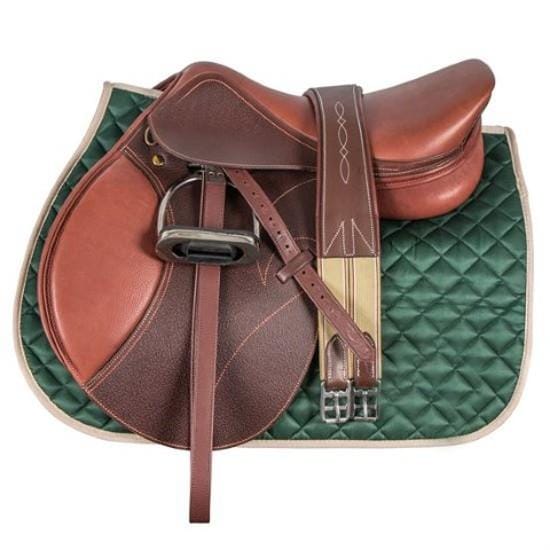
Reviews
Clear filtersThere are no reviews yet.